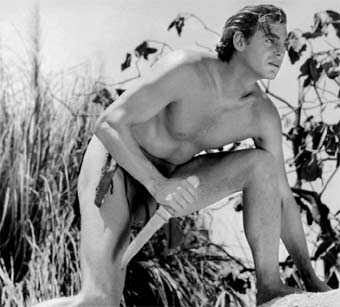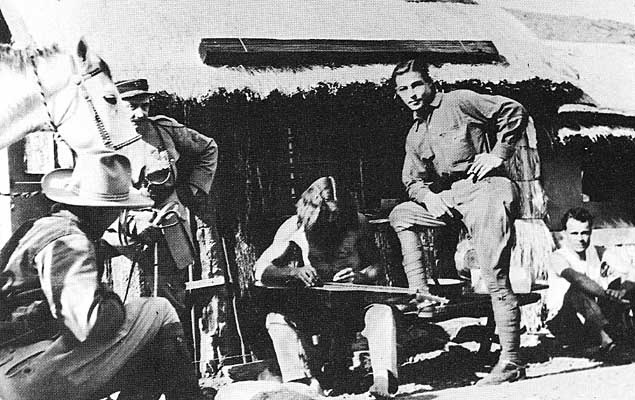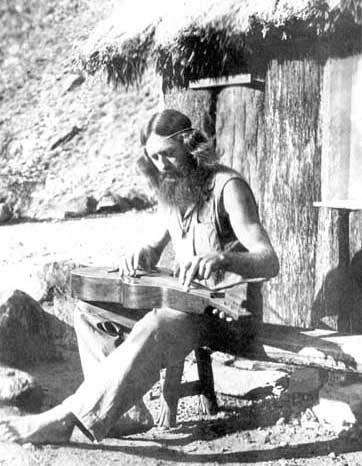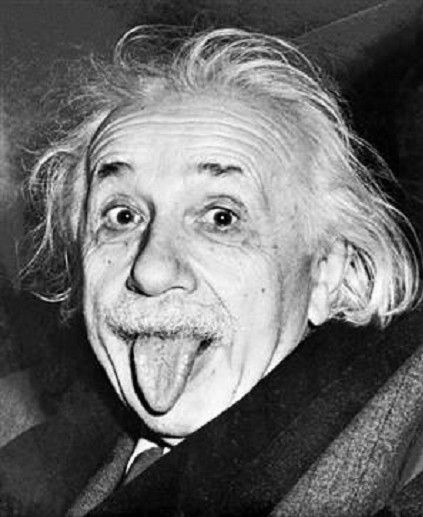FedoraFan112390
Practically Family
- Messages
- 646
- Location
- Brooklyn, NY
Are there any examples of rare men who grew their hair long in the Golden Era?

,
Most hermits grew long hair and beards, and looked and dressed remarkably like the hippies of the '60s.
A similar group of WWII vets lived on the beaches of SoCal, though I don't think they were longhairs. They were recruited off the same beaches for their swimming and diving prowess to be Navy frogmen (SEALS). Post war they returned to live off (spearfishing and diving for lobster) the ocean in shacks and were given several years to adjust before being run off. I recall a local sheriff saying how hard it was to roust them considering their service.In Southern California, there were the little-remembered "hermits" who lived in the Santa Monica mountains. Most of them were First World War veterans who couldn't readjust to civilian life.
,
In Southern California, there were the little-remembered "hermits" who lived in the Santa Monica mountains. Most of them were First World War veterans who couldn't readjust to civilian life. In the 1920s and '30s, they lived in the hilly parts of Santa Monica in shacks they built themselves. Most hermits grew long hair and beards, and looked and dressed remarkably like the hippies of the '60s.
In the early 1930s, it became fashionable among some Hollywood actors to spend their weekends "living" among the hermits, running around shirtless and in blue jeans, eating and cooking squirrels, etc. I've got a 1932 Los Angeles Times newspaper article about it somewhere. The article laments that stars like Wallace Beery wore sweatshirts and dungarees in their free time. No mention, though, of what the hermits thought of these movieland thrill-seekers running around in their space.






 Alden 403 Moc Toe Boot - Brown Chromexcel - $680 The classic "Indy" style Alden Boot in the classic Horween brown Chromexcel.
Alden 403 Moc Toe Boot - Brown Chromexcel - $680 The classic "Indy" style Alden Boot in the classic Horween brown Chromexcel.  Grant Stone Diesel Boot Dark Olive Chromexcel - #395 Goodyear welted, Horween Chromexcel, classic good looks.
Grant Stone Diesel Boot Dark Olive Chromexcel - #395 Goodyear welted, Horween Chromexcel, classic good looks.  Himel Bros. - The Ross Mk. 1 Leather Jacket Classic D-pocket motorcycle/aviator style jacket.
Himel Bros. - The Ross Mk. 1 Leather Jacket Classic D-pocket motorcycle/aviator style jacket. I don't know if you ever heard about the german "Swingjugend" or "Swing Kids". In the late 30s and early 40s it was common for young men in germany to have a very short haircut (shaved back and sides) and join the Hitler Jugend. There were a few teenagers who listend to swing music and preffered the lifestyle of the UK and USA to the militarism in their own country. They wanted to appear "cool" and not like strong soldiers. I think they would be described as "slackers" today. They had a certain style to dress themselves in long suit jackets and also sported longer haircuts. Of course the Nazis didn't like to see that and often forced Swing Kids to cut their hair. The french Zazous were a related youth culture under the german occupation of france.
Here are some cartoons that make fun of the Zazous or Swingkids...They are from the early 40s.




That's right. I am glad that I am not born in the 1920s. There was almost no way to excape the propaganda and have a normal childhood. The swing kids didn't really fight against the nazis but they didn't believe the propaganda and dreamed of a better future.It is amazing how the whole Nazi regime was basically geared up for war from the get go. Blokes like Churchill picked up on it but not the ruling elite of Europe unfortunately. The total regimentation of life into militarism in all its forms is a shocking example of what Nazism truly accomplished and hoped to spread inexorably across Europe.



